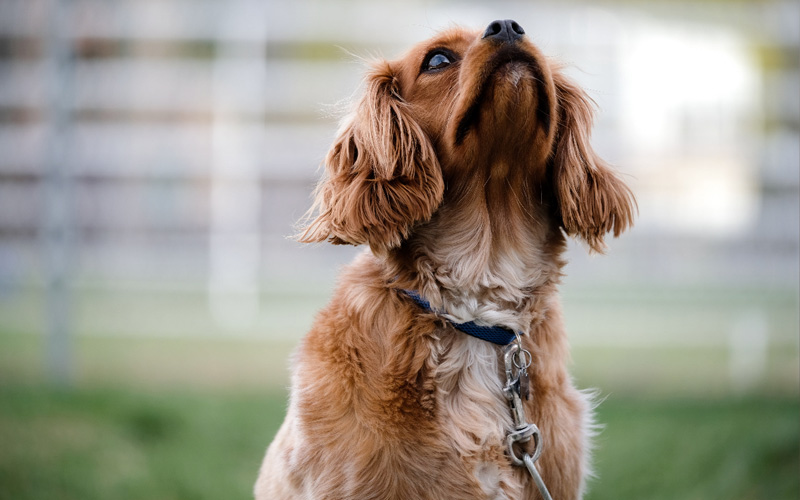Have you ever heard of the reverse sneeze?
This phenomenon, however curious you may find it, is quite common in dogs and even sometimes in cats. In fact, many dog owners have observed it in their four-legged companions even without knowing what it was. For a person who doesn’t know of the existence of the reverse sneeze, it’s manifestation can get scary because the owner does not yet have an understanding of what is happening to the dog and might even think its choking on itself.
At the end of this post, you will be able to tell if reverse sneezing is dangerous for your dogs, how and why it manifests, as well as how you can help your dog overcome reverse sneeze.
Common Causes for Reverse Sneeze
While the “common” case of sneezing consists of a strong exhalation of air from the nostril through the airways, the opposite is the case for the reverse sneeze. As the name suggests, Instead of leaving, air enters the body forcefully through large inhalations. Although reverse sneezing can occur in all dogs, certain breeds like the Boxer, Carlino, French Bulldog, Boston Terrier, English Bulldog, and much more are most prone to it. Among these breeds, the smaller ones are most affected due to their having a smaller trachea and throat.
A reverse sneeze occurs when the dog suffers a spasm in the throat and soft palate and begins to suck in air. In addition to the noise, the dog adopts a surprisingly odd physical posture when reverse sneezing occurs, they tend to stop with their elbows apart, bend their heads down and extend their backs. Reverse sneezing can be as a result of several reasons, from an allergic reaction such as pollen, dust or mites, to a strong emotional reaction, a sudden awakening, excessive physical exercise, or a collar that is too tight.
If your dog suffers frequent sessions of reverse sneezing, it is advisable to identify the particular agent or cause triggers it and avoid it as much as possible.
Is reverse sneezing dangerous in dogs?
In rare cases of complications, it is important to note that reverse sneezing is not dangerous. It is a natural occurrence in dogs and we should try as much as possible to stay calm and not interfere by trying to help them as everything should be fine in no time.
How to help my dog with reverse sneezing?
The usual reaction to a reverse sneeze attack on a dog is to think that he/she is choking, has an asthma crisis, or something more serious. However, dogs are used to experiencing reverse sneezing, it is somewhat intricate to their species, just as sneezing or yawning is to us. Imagine that each time you sneeze or yawn, everyone around you gets worried or jumps at you to try to help you? I’m sure you’d find such behavior more overwhelming or embarrassing than the sneeze or yawn itself.
So, the best solution may be to stay calm and ignore the dog during that period and to watch from afar to ensure that things do not get out of control.
It is perfectly understandable that some people cannot resist and feel the need to approach their dog to try to help it. In this case, you can attempt to gently massage the throat from the outside to help the dog relax. Another option is to place a hand on the snout and gently plug the nose to close the air inlet. This will cause saliva swallowing reflex that can stop the attack.
When is it recommended that I consult with a veterinarian?
Reverse sneeze is responsible for a large number of urgent consultations with the Vet. Some owners may get into full panic mode as they don’t really know what’s happening to the dog. In fact, reverse sneezing episodes are very short, usually lasting between a few seconds and a few minutes, some are so short that by the time the owner gets to the veterinarian, the attack it’s already over. If you suspect that your dog has an unusual case of reverse sneezing, what you can do is record a video of the attack and show it to your veterinarian during your next visit, to make sure everything’s okay.
What could be worrying are cases where the dog experiences reverse sneezings so often that the condition affects their quality of life. In this case, you can consult your veterinarian to help you figure out the trigger and thus a solution because at times what might sometimes seem like a simple reverse sneeze could be caused by the presence of a foreign body in the airways, an infection, growth of tumors, and it is best to check with the veterinarian to rule out these causes.
Does reverse sneeze occur in other species?
Although reverse sneeze is mostly found in dogs, some cats may experience it too. Although reverse sneezing is less common and harmless in cats, if your cat has frequent episodes, it may be a justified reason for a visit to the veterinarian.


